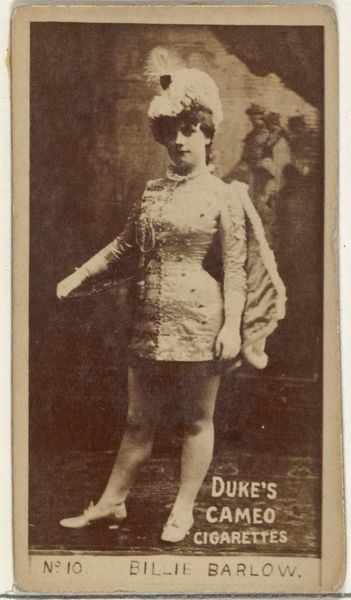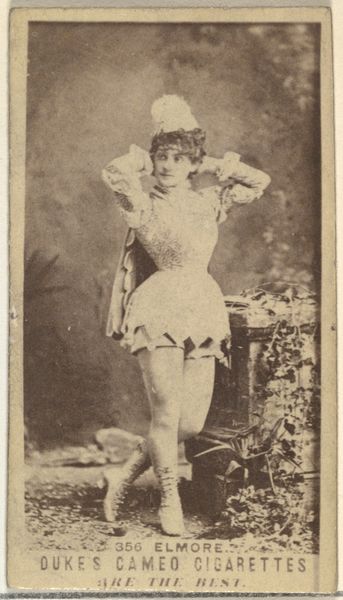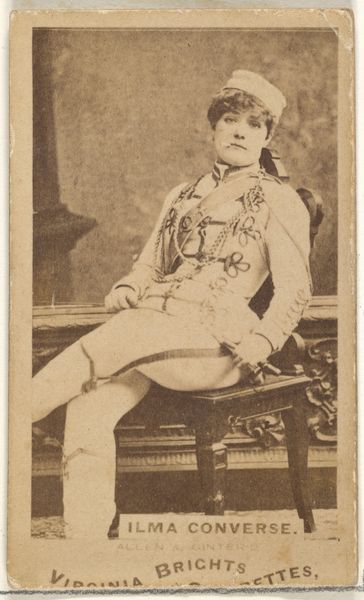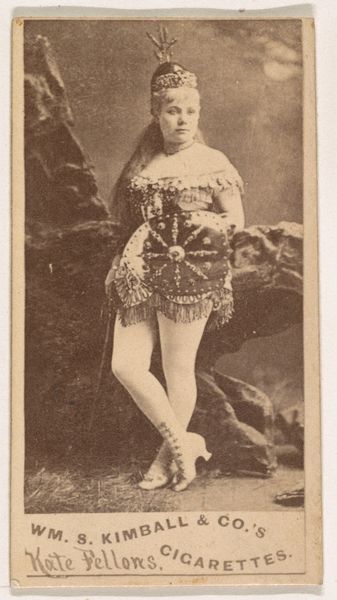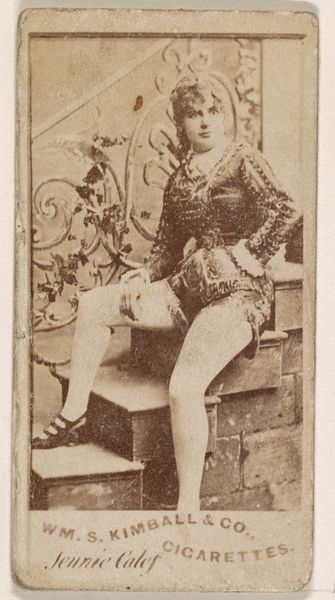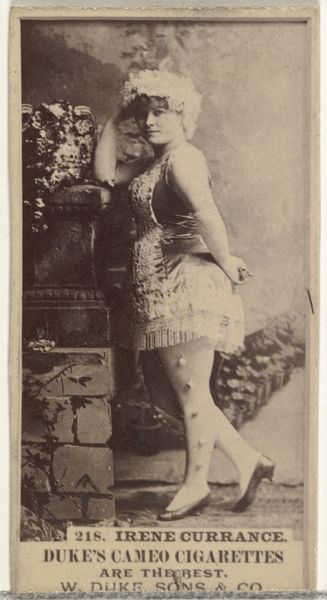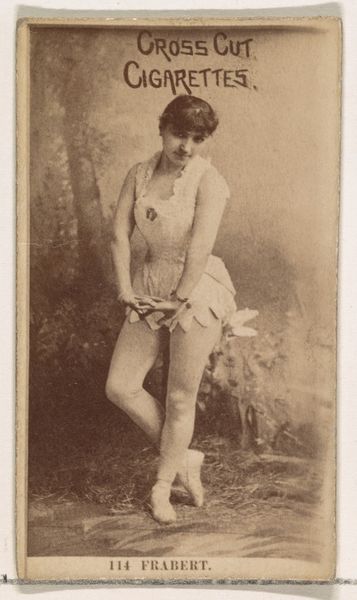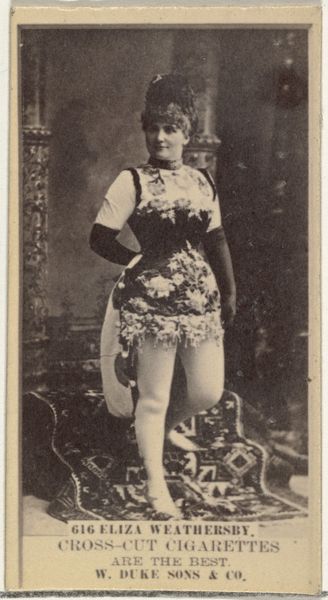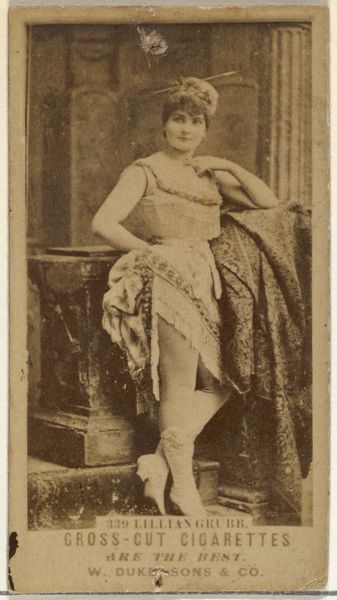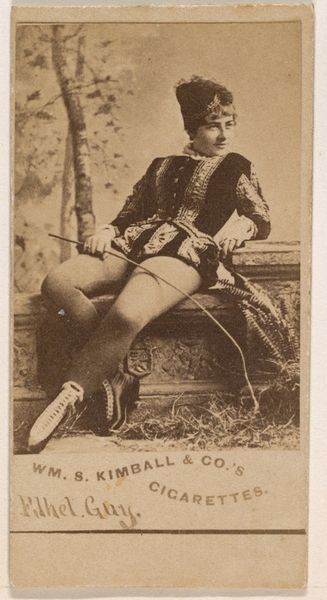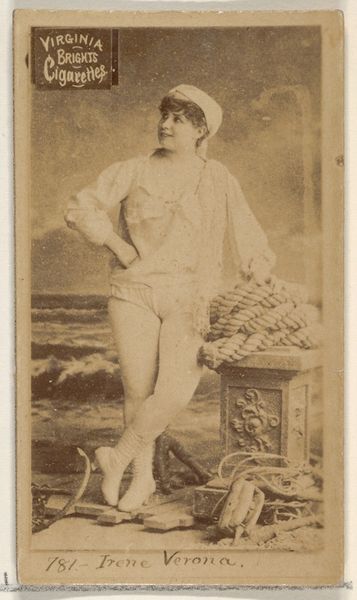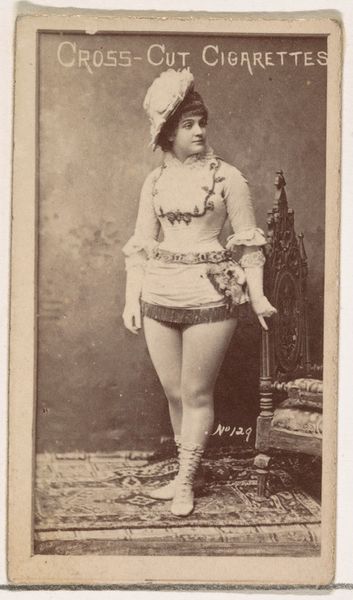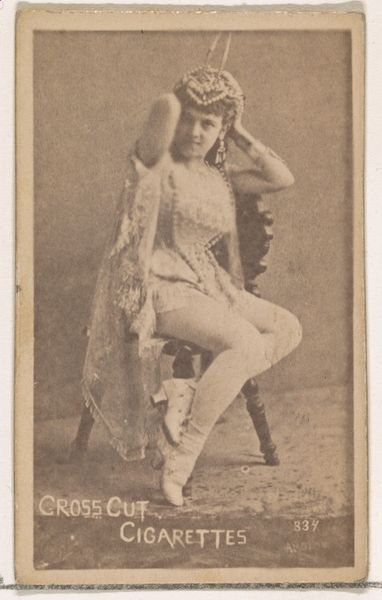
Lydia Thompson, from the Actors and Actresses series (N145-7) issued by Duke Sons & Co. to promote Duke Cigarettes 1880s
0:00
0:00
print, photography
#
portrait
# print
#
photography
#
19th century
Dimensions: Sheet: 2 11/16 × 1 3/8 in. (6.8 × 3.5 cm)
Copyright: Public Domain
Curator: Let's discuss this small photographic print dating from the 1880s, part of the Actors and Actresses series promoting Duke Cigarettes. It's currently held at the Metropolitan Museum of Art. What are your initial impressions? Editor: I immediately notice the sepia tones and the slightly stiff pose, a hallmark of early photography. There’s an attempt at classical theatricality, but the overwhelming thing that strikes me is it served as an advert. The whole staging of femininity is intertwined with capitalistic endeavor, to promote consumer culture and Duke Cigarettes. Curator: Indeed, these cards were inserts in cigarette packs, acting as promotional tools. The series itself points to the rising celebrity culture of the era and the clever entanglement of entertainment with mass consumption. Lydia Thompson herself was a significant figure in British burlesque! Editor: Burlesque... So, there's a layering of symbolism at play here! She’s dressed in costume, posed against what is presumably supposed to be a classical set piece. Burlesque utilizes classical iconography and inverts it through exaggerated spectacle. Duke Cigarettes clearly targeted that rebellious spirit in marketing to potential customers. Is that garment embroidered with grapes and flowers? Curator: Precisely! And that ornamentation would have required significant handiwork. Look closely, it gives weight to how fashion was crafted with needle and thread versus mass-produced by machine at the time. You see her theatrical outfit contrasts with its actual production – the labor that’s implicit even here, in a tobacco card, is something we must account for. Editor: So the grape motifs could tie into Bacchic revelry, and the theatrical themes are entwined! The very pose and composition are trying to elevate the figure to a symbolic realm but her commodification makes the message unclear: entertainment or desire? Curator: Or simply aspiration? Maybe these cards offered a glimpse into a world of glamour for working-class consumers. Lydia Thompson's image, produced through the machinery of both photography and industrial tobacco production, was disseminated widely. A sort of aspirational artifact available at scale. Editor: Yes, and the material production mirrors a new means for disseminating icons to build new connections. Lydia Thompson on a Duke cigarette card serves a purpose larger than art, bigger than tobacco itself. Curator: Thinking through it now, seeing how visual iconography from British performance culture ended up in American industrial promotion. An interesting intersection! Editor: Absolutely! Now that I see that tension it's a portrait, commodity and artifact all in one. A nice distillation on celebrity then, no?
Comments
No comments
Be the first to comment and join the conversation on the ultimate creative platform.
